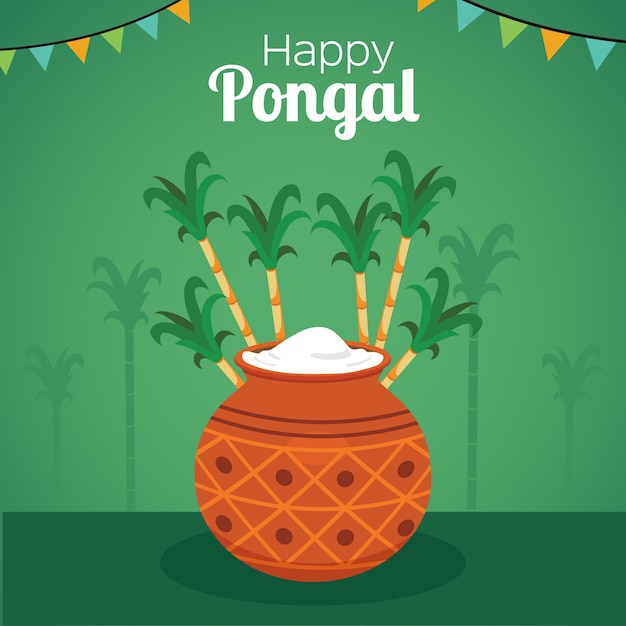Pongal is a well-known South Indian holiday. It is traditionally celebrated over four days during the blessed month of Thai (January – February). It has its roots in South India, where over 4 days (15-18 Jan), farmers give thanks to ‘Surya’, the Sun God and giver of life, for the blessings of a rich harvest. Pongal festival is condensed to a single day in Singapore, but it is one of the most memorable and colourful festivals of the year. Are you excited about Pongal 2024?
Pongal Singapore will be celebrated on January 15th this year. And traditional agricultural life, you might find in rural India. Tamils in Singapore, however, continue to give thanks to the Sun, elements, and deities who give life. So, here’s everything you need to know about Pongal Singapore 2024.

Here is what kids should know about Pongal in Singapore:
1. What it means?
Pongal came from the word “Pongu”, meaning “Flourish” or “To boil over” in Tamil. It is a tradition.
A new clay pot is filled with milk and freshly cooked rice. As it cooks, turmeric, brown sugar, raisins, cashew nuts, ginger, and ghee are added.
When the rice begins to boil, a family member will say “pongollo pongal,” which translates to “may this rice boil over” in Tamil. It is a wish for blessings or abundance.
2. Bhogi Pongal
Bhogi Pongal is the first day of the festival. Lord Indra, the ruler of the clouds and the giver of rains, is worshipped, symbolizing a new beginning.
PHOTO: INSTGRAM / DJDASHINI
Oil lamps are lit, new clothes are donned and colourful designs in rice flour (kolam) are created on the floors of houses.
3. Surya Pongal
Surya Pongal is the second day of Pongal. The Sun God is praised. At dawn, families prepare a pot of rice with milk as an offering to the sun god.
Pongal means to ‘overflow’, hence the pot of rice has to bubble over to symbolise prosperity and abundance. This is then served to members of the family as well as any visitors to the house.
Big functions usually take place in everybody’s house on the second day of Pongal.
Traditionally, people also tie a turmeric plant around the clay pot in which they boil the rice.
A number of items are prepared to offer to God including two sticks of sugar cane in the background and coconut and bananas in the dish. This teaches children the importance of worshipping and thanking the Creator.
4. Mattu Pongal
Mattu Pongal is the third day of the Pongal. Is set aside to honour cattle cows, and it is considered sacred animals in the Hindu religion.
To remember the work they do, like ploughing the fields and providing milk, the cattle are scrubbed and their horns painted.
Multi-coloured. Beads, jingling bells, and colourful flower garlands beautify them. Cattle are traditionally fed Pongal dishes before being taken to villages for a visit.
The sounds of the cowbells create a festive atmosphere and young men in India sometimes race each other’s cattle. Several prayers are also performed on the cows and bulls to save people from evil eyes.
5. Kannum Pongal
Kannum Pongal is the last or fourth day of Pongal. It is about fortifying bonds.
After washing the turmeric leaf, the woman gets up early to place it on the ground. Then there are the leftovers, such as rice and coloured rice, betel leaves, and so on. Is placed on a turmeric leaf.
Men are also asked to be present during the ritual when the sisters place the rice in the centre of the leaf and worship them using turmeric water, limestone, and rice.
Water is sprinkled on the kolam in front of the house by women. It is the day when temples make offerings in response to special prayers.
6. Origins
Pongal festival celebrations are also linked to some legendary stories. The two most popular Pongal legends are those about Lord Shiva and Lord Indra.
Lord Shiva and his Cattle Basava
According to legend, Shiva once asked his bull, Basava, to go to the earth and ask the mortals to have an oil massage and bath every day, and to eat once a month. Basava inadvertently declared that everyone should eat every day and take an oil bath once a month.
This angered Shiva, who cursed Basava and sentenced him to live on Earth forever. He would have to plough the fields and assist people in producing more food. As a result, today, it is associated with cattle.
Pongal celebrations were also inspired by another legend involving Lord Indra and Lord Krishna. It is said that when Lord Krishna was a child, he decided to teach Lord Indra a lesson after becoming the king of all deities and becoming arrogant. Lord Krishna ordered all cowherds to stop worshipping Lord Indra.
This angered Lord Indra, who sent forth storm clouds and three days of continuous rain. Lord Krishna ascended Mount Govardhan to save all humans. Later, Lord Indra realised his error and the divine power of Krishna.
7. Where to go for Pongal in Singapore?
Kinta Road
Cultural dances and a thrilling mass Pongal cooking competition usually take place in the midst of a stunning street light-up featuring seasonal motifs such as pots, sugar canes, and cattle. Watch out for more events this year!
Sri Senpaga Vinayagar Temple
Examine the 32 forms of Lord Vinayagar sculpted onto its four granite pillars, a relief unrivalled by any Vinayagar temple—here or in India.
Campbell Lane
This Little India street is transformed into a pedestrian-only mini village, with a huge variety of stalls selling unique festive souvenirs and daily Pongal-themed performances.


